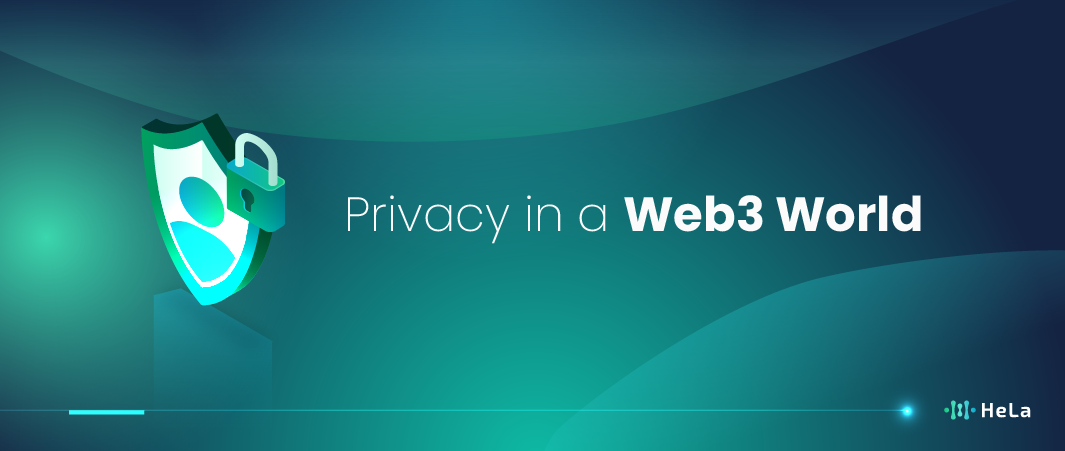As the internet evolves, the concept of Web3 is becoming increasingly prominent. Unlike its predecessors, Web3 promises a decentralized and user-centric digital landscape. At its core, Web3 aims to empower users by returning control over data and digital identities to individuals. However, with this new level of control comes new challenges, particularly in the realm of privacy.
In a Web3 world, the stakes for digital privacy are higher than ever. Traditional methods of protecting personal information may no longer suffice. Users need to understand the unique privacy risks associated with decentralized technologies and how to navigate them effectively. This article delves into the nuances of privacy in a Web3 environment, offering insights into potential issues and practical solutions.
As we explore the future of digital security, it’s crucial to grasp the foundational concepts of Web3 and the inherent privacy challenges it presents. From the role of blockchain technology to practical tips for safeguarding your personal data, we’ll guide you through the complexities of maintaining privacy in this new digital era.
Understanding Web3: The Next Generation of the Internet

Web3, often referred to as the decentralized web, represents the third generation of internet services. Unlike Web1, which was largely read-only, and Web2, which introduced user-generated content and social media, Web3 aims to decentralize control and distribute power among users. This shift is made possible through technologies like blockchain, which provide a secure and transparent way to manage data without relying on centralized entities.
Web3 envisions a future where users have full ownership of their data and digital identities. This paradigm shift offers numerous benefits, including enhanced security, improved transparency, and greater control over personal information. However, the decentralized nature of Web3 also introduces unique privacy challenges that need to be addressed.
One of the key components of Web3 is the use of decentralized applications (dApps), which run on blockchain networks. These applications offer a wide range of services, from financial transactions to social networking, all without the need for traditional intermediaries. While this decentralization reduces the risk of data breaches and censorship, it also requires users to take greater responsibility for their own privacy and security.
The Privacy Challenges of Web3
While Web3 promises to revolutionize the internet with decentralization and user control, it also introduces several privacy challenges that need to be carefully navigated
1. Transparency vs. Privacy
One of the fundamental principles of blockchain technology, which underpins Web3, is transparency. Every transaction made on a blockchain is recorded on a public ledger, making it accessible to anyone. While this transparency is crucial for building trust and ensuring accountability, it can also compromise privacy. Users’ transaction histories and other interactions can be traced back to their public keys, potentially revealing sensitive information.
2. Pseudonymity Isn’t Anonymity
In Web3, users often operate under pseudonyms rather than their real identities. While pseudonymity offers a layer of privacy, it is not foolproof. Sophisticated techniques can link pseudonyms to real-world identities, especially when users inadvertently expose personal information through their interactions. Thus, pseudonymity provides some privacy, but it doesn’t guarantee complete anonymity.
Also Read: Double Protocol: A New Standard in Blockchain Technology
3. Data Storage and Security
Decentralized applications store data across multiple nodes in a network rather than on centralized servers. While this decentralization enhances security by reducing single points of failure, it also poses privacy risks. Ensuring that sensitive data is properly encrypted and stored securely across decentralized networks is a significant challenge. Additionally, the immutability of blockchain means that once data is recorded, it cannot be altered or deleted, raising concerns about the long-term privacy of stored information.
4. Smart Contract Vulnerabilities
Smart contracts, which are self-executing contracts with the terms directly written into code, are a cornerstone of many Web3 applications. However, they can be vulnerable to bugs and exploits. If a smart contract handles sensitive information, any vulnerability can lead to privacy breaches. Ensuring the security of smart contracts is crucial to maintaining user privacy.
5. Regulatory and Legal Issues
The decentralized nature of Web3 complicates regulatory oversight. Traditional privacy laws and regulations may not be easily applicable to decentralized networks, creating a gray area in terms of legal protections for users. This regulatory uncertainty can leave users vulnerable and make it difficult to enforce privacy rights.
Potential Solutions to Web3 Privacy Issues

To address the privacy challenges in a Web3 world, several potential solutions are being explored and implemented. Each solution aims to enhance privacy while maintaining the benefits of decentralization.
1. Advanced Cryptographic Techniques
Cryptographic techniques are at the forefront of enhancing privacy in Web3. Technologies like zero-knowledge proofs (ZKPs) allow one party to prove to another that they know a value without revealing the actual value. This can be particularly useful in verifying transactions or identities without exposing sensitive information. For instance, ZKPs can enable financial transactions to be validated without revealing transaction amounts or participants.
Additionally, homomorphic encryption allows computations to be performed on encrypted data without decrypting it first. This means sensitive data can be processed securely without ever exposing it, thereby preserving privacy while still enabling complex functionalities such as data analysis and processing. These advanced cryptographic methods are crucial for maintaining user privacy in decentralized applications.
2. Decentralized Identity Systems
Decentralized identity (DID) systems aim to give users control over their digital identities. Traditional identity systems often rely on centralized entities, which can be vulnerable to data breaches and misuse of personal information. DID systems, on the other hand, allow users to manage their identity information securely and selectively disclose it as needed. With DID, users can authenticate themselves for various services without exposing unnecessary personal information.
For example, a user can prove their age without revealing their birthdate or other personal details. This selective disclosure enhances privacy in various online interactions, from financial services to social networks, ensuring that users have greater control over their personal data.
3. Privacy-Focused Blockchains
Some blockchain projects are specifically designed with privacy in mind. For example, privacy-focused blockchains like Monero and Zcash use advanced cryptographic methods to provide enhanced privacy features. Monero employs ring signatures and stealth addresses to obscure transaction details, making it difficult to trace transactions back to individuals.
Zcash, on the other hand, uses zero-knowledge proofs to allow users to shield their transaction details from public view while still being verifiable on the blockchain. These privacy-focused blockchains offer an alternative for users who prioritize confidentiality in their transactions, ensuring that their financial activities remain private and secure.
4. Layer 2 Solutions
Layer 2 solutions are built on top of existing blockchain networks to improve scalability and privacy. These solutions can process transactions off the main blockchain, reducing the amount of publicly accessible data. For instance, technologies like the Lightning Network for Bitcoin or Optimistic Rollups for Ethereum allow for faster and more private transactions by conducting most of the activity off-chain and only recording the final state on the main blockchain. By moving transactions off-chain, layer 2 solutions help mitigate privacy risks associated with the transparency of blockchain technology, while also addressing scalability issues that can hinder widespread adoption.
5. Enhanced User Education and Tools
Empowering users with knowledge and tools to protect their privacy is essential. Many users are not fully aware of the privacy risks associated with decentralized technologies or the best practices for mitigating these risks. Providing education on managing digital identities, recognizing phishing attacks, and using privacy-enhancing tools is crucial. Tools such as secure wallets, privacy-focused browsers, and encryption software can help users safeguard their data. By equipping users with the right resources and knowledge, they can take proactive steps to protect their privacy in a Web3 world, making informed decisions about their digital security.
While Web3 brings numerous advantages in terms of decentralization and user empowerment, it also presents significant privacy challenges. Advanced cryptographic techniques, decentralized identity systems, privacy-focused blockchains, layer 2 solutions, and enhanced user education are critical in addressing these challenges. By adopting these solutions and staying informed about privacy best practices, users can navigate the complexities of Web3 and enjoy its benefits without compromising their privacy. As the Web3 ecosystem continues to evolve, ongoing innovation and awareness will be key to ensuring a secure and private digital future.
The Role of Blockchain in Web3 Privacy

Blockchain technology plays a central role in the Web3 ecosystem, providing the foundation for decentralization, security, and transparency. However, its impact on privacy is multifaceted and requires a nuanced understanding.
1. Immutable Ledgers and Privacy Concerns
At the heart of blockchain technology is the concept of an immutable ledger, where every transaction is permanently recorded. This feature ensures data integrity and prevents tampering, which is essential for trustless systems.
However, immutability also means that any personal data recorded on the blockchain cannot be altered or deleted. This permanence can pose significant privacy risks, as users must be cautious about what information they choose to share on the blockchain.
2. Public vs. Private Blockchains
There are different types of blockchains, each with varying implications for privacy. Public blockchains, like Bitcoin and Ethereum, allow anyone to participate and view transactions. This openness can compromise privacy, as transaction histories are visible to all.
On the other hand, private blockchains restrict access to a defined group of participants, offering better privacy controls. Hybrid blockchains aim to combine the best of both worlds, allowing for both transparency and privacy depending on the use case.
3. Privacy-Enhancing Technologies
To mitigate privacy concerns, several privacy-enhancing technologies are being integrated into blockchain systems. These include:
- Zero-Knowledge Proofs: These allow for the verification of transactions without revealing the underlying data. Zero-knowledge proofs can confirm that a transaction is valid without disclosing any details about the transaction itself, maintaining user privacy.
- Ring Signatures: Used in privacy-focused cryptocurrencies like Monero, ring signatures mix a user’s transaction with several others, making it difficult to trace the origin of the transaction. This obfuscation helps protect user anonymity.
- Stealth Addresses: These are single-use addresses generated for each transaction to prevent linkability. By using a different address for each transaction, stealth addresses ensure that transactions cannot be easily traced back to the user.
4. The Role of Smart Contracts
Smart contracts are self-executing contracts with the terms of the agreement directly written into code. While they offer automation and efficiency, they also introduce privacy considerations. For instance, smart contracts can be programmed to include privacy features, such as confidential transactions, which hide transaction amounts while still allowing verification of the transaction’s validity.
5. Regulatory Compliance and Privacy
As Web3 continues to evolve, regulatory frameworks are being developed to address the unique challenges of decentralized systems. Compliance with regulations such as the General Data Protection Regulation (GDPR) and other data protection laws is essential for ensuring privacy in blockchain applications. Developers and organizations must design their systems with these regulations in mind, balancing transparency and privacy to protect user data.
Practical Tips for Protecting Your Privacy in a Web3 World
Navigating privacy in a Web3 world requires a proactive approach. Here are some practical tips to help you protect your personal information and maintain privacy while engaging with decentralized technologies.
1. Use Privacy-Focused Wallets
Choosing a wallet that prioritizes privacy is crucial. Look for wallets that offer features such as anonymous transactions, advanced encryption, and support for privacy coins. These wallets can help you manage your digital assets securely while minimizing exposure to privacy risks.
2. Be Mindful of the Information You Share
Given the transparency of blockchain technology, it’s important to be cautious about the information you share. Avoid including personal details in transaction notes or public forums associated with your blockchain activities. Use pseudonyms and consider the long-term implications of any data you put on the blockchain.
3. Leverage Privacy Coins
Privacy coins like Monero and Zcash offer enhanced privacy features compared to mainstream cryptocurrencies. These coins use advanced cryptographic techniques to obscure transaction details, making it more difficult for third parties to trace your activities.
4. Educate Yourself on Privacy Best Practices
Staying informed about the latest privacy best practices and tools is essential. Regularly update your knowledge on privacy-enhancing technologies, secure communication methods, and data protection strategies. This education will empower you to make informed decisions and better protect your privacy.
5. Use Decentralized Identity Solutions
Decentralized identity solutions allow you to control your digital identity and only share information when necessary. These solutions provide a secure and private way to authenticate yourself without revealing excessive personal information.
Also Read: Top 20 New Crypto to Explode in 2024 (Updated List)
6. Enable Multi-Factor Authentication (MFA)
Multi-factor authentication adds an extra layer of security to your accounts. By requiring multiple forms of verification, such as a password and a biometric scan, MFA makes it more difficult for unauthorized users to access your information.
7. Stay Vigilant Against Phishing and Scams
Phishing attacks and scams are prevalent in the digital world, including in Web3 environments. Be cautious of unsolicited messages and links, and always verify the legitimacy of sources before providing personal information or making transactions.
Conclusion
As we transition into a Web3 world, the landscape of digital privacy is undergoing significant changes. While decentralization and user empowerment are at the heart of Web3, these advancements also introduce new privacy challenges that must be addressed.
The transparency inherent in blockchain technology offers both benefits and risks. While it enhances trust and accountability, it can also compromise user privacy if not managed properly. The use of advanced cryptographic techniques, privacy-focused blockchains, and decentralized identity systems are crucial steps toward mitigating these risks.
For individuals and businesses alike, staying informed and adopting privacy best practices is essential. By using privacy-enhancing tools, being mindful of the information shared, and staying vigilant against security threats, users can navigate the complexities of privacy in a Web3 world.
Ultimately, the future of digital security in a Web3 environment hinges on our ability to balance transparency and privacy. Through continued innovation and proactive measures, we can create a digital landscape that protects user privacy while fostering trust and decentralization.
Disclaimer: The information provided by HeLa Labs in this article is intended for general informational purposes and does not reflect the company’s opinion. It is not intended as investment advice or recommendations. Readers are strongly advised to conduct their own thorough research and consult with a qualified financial advisor before making any financial decisions.

Joshua Soriano
I am a writer specializing in decentralized systems, digital assets, and Web3 innovation. I develop research-driven explainers, case studies, and thought leadership that connect blockchain infrastructure, smart contract design, and tokenization models to real-world outcomes.
My work focuses on translating complex technical concepts into clear, actionable narratives for builders, businesses, and investors, highlighting transparency, security, and operational efficiency. Each piece blends primary-source research, protocol documentation, and practitioner insights to surface what matters for adoption and risk reduction, helping teams make informed decisions with precise, accessible content.
- Joshua Soriano#molongui-disabled-link
- Joshua Soriano#molongui-disabled-link
- Joshua Soriano#molongui-disabled-link
- Joshua Soriano#molongui-disabled-link

